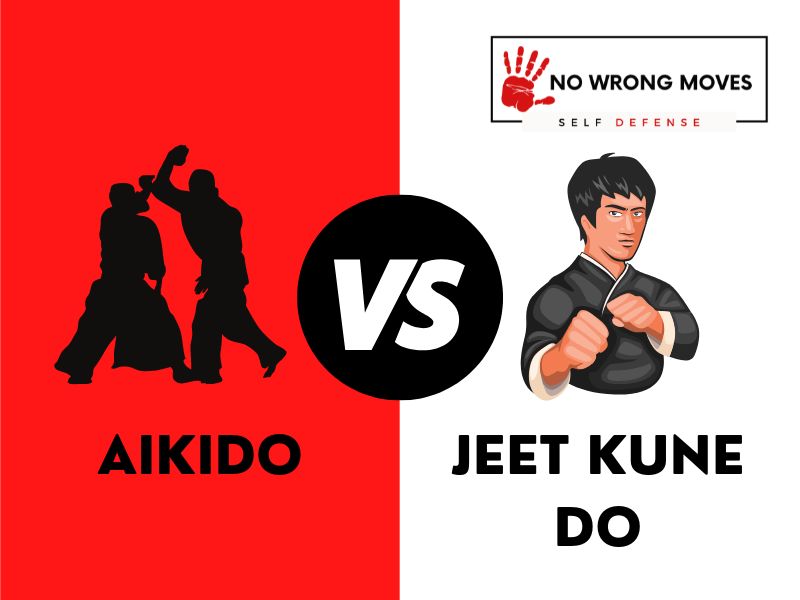
- What We Know About Aikido
- What We Know About Jeet Kune Do
- Key Elements Of Aikido
- Key Elements Of Jeet Kune Do
- Aikido Rankings & Levels
- Jeet Kune Do Rankings & Levels
- Aikido Vs. Jeet Kune Do Attire
- What A Typical Aikido Training Session Looks Like
- What A Typical Jeet Kune Do Training Session Looks Like
- Conclusion: Aikido Vs. Jeet Kune Do
Many people in the martial arts community debate whether Aikido or Jeet Kune Do is the better practice. While both offer unique benefits and principles, there are some key differences that set them apart.
The main difference between Aikido and Jeet Kune Do is that Aikido relies on redirecting attacks and controlling an opponent. In contrast, Jeet Kune Do focuses on using minimal effort to counter-attack.
Aikido is a non-aggressive martial art, while Jeet Kune Do is more aggressive and specializes in self defense. Aikido practitioners focus on redirecting the energy of an attack, while Jeet Kune Do practitioners aim to strike their opponent before the attack can be fully executed.
Another difference between these two martial arts is their approach to technique. Aikido emphasizes form and proper technique, while Jeet Kune Do focuses on simplicity and practicality in combat situations.
In terms of philosophy, Aikido follows the principles of non-violence, harmony, and self-improvement. Jeet Kune Do's philosophy centers around the idea of "using no way as way, having no limitation as limitation."
Ultimately, the choice between Aikido and Jeet Kune Do depends on personal preference and goals. Both martial arts offer their own unique set of benefits and can be effective in self-defense situations. It is important to research and try out different styles before committing to one.
What We Know About Aikido
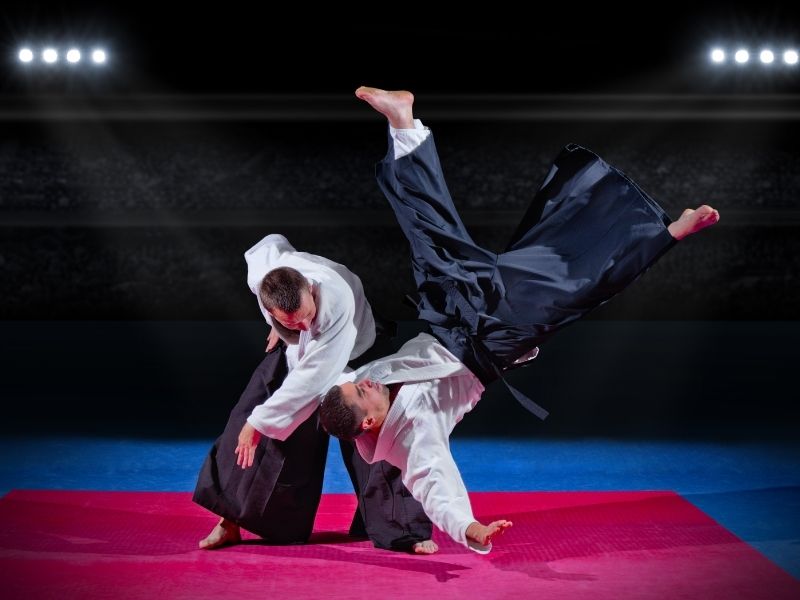
Aikido, the art of peace. Founded over fifty years ago by Master Munehide Uyeshiba who still practiced the discipline beyond the age of due to his love for this style.
It's a style that has been passed down through generations, teaching its practitioners to defend themselves while causing the least harm possible to their attacker.
The main elements of Aikido involve redirecting the energy and force of an attacker, using their own momentum against them while simultaneously controlling and neutralizing the situation. This is achieved through various throws, joint locks, and pins.
Mastering Aikido requires discipline, focus, and a strong connection to the principles of peace and harmony. It is not just an effective form of self defense, but also a way to cultivate inner peace and balance.
As Master Uyeshiba's philosophy states, the essence of Aikido is to harmonize with nature's laws, to seek unity with the universe, and to cultivate a spirit of love.
Practicing Aikido allows us not only to protect ourselves physically, but also mentally and spiritually. It is a path towards self-improvement and enlightenment. That is the true power of Aikido.
What We Know About Jeet Kune Do

One of the key principles of Bruce Lee's Jeet Kune Do is to "be like water:" to be flexible and adaptable, to move with quickness and purpose, and to use the opponent's own force against them. This principle is based on Lee's experience in Karate, Boxing, and Wing Chun.
Another principle of Jeet Kune Do is that there are no definitive techniques or stances; it is a constantly evolving art that must be adapted to the specific situation.
This makes Jeet Kune Do particularly effective in combat, as it allows practitioners to quickly adapt their techniques to the changing conditions of a fight.
Due to its practicality and effectiveness, Jeet Kune Do has gained a loyal following among martial artists who value simplicity and efficiency. If you are looking for an art that will challenge you mentally and physically, Jeet Kune Do may be the perfect choice for you.
Of course, this is only a brief history and understanding of Aikido and Jeet Kune Do, but if you want to go deeper into either art, be sure to check out the following posts:
Now, back to the comparison...
Let's look at the origins of the respective disciplines and then compare the key elements of their practices. You will be able to understand some of their similarities and differences a bit better afterward.
| Aikido | Jeet Kune Do | |
| Origins | Japanese | Chinese, US (The founder, Bruce Lee, created it whilst living in the US) |
Key Elements Of Aikido
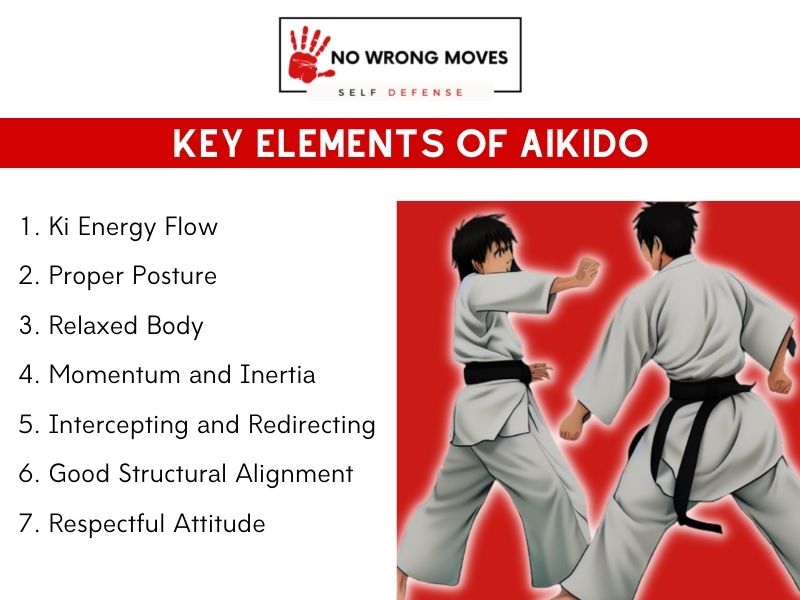
Aikido is a Japanese martial art that focuses on the proper stance and balance of the practitioner. Proper stance and balance are critical components of Aikido, as they provide the foundation for all other techniques.
A stable and balanced stance allows the practitioner to move fluidly and with control, making it easier to perform techniques effectively.
In Aikido, practitioners learn to redirect their opponent's energy rather than using force against them. Redirecting energy is one of the fundamental aspects of Aikido, and it's difficult to separate this idea from the sport itself.
Through properly redirecting an opponent's energy, Aikido practitioners can use their opponent's momentum against them, rather than relying on their own strength.
Apart from physical techniques, Aikido also emphasizes controlling one's emotions. Practitioners learn to remain calm and focused, even in stressful situations.
Aikido also places a strong emphasis on non-violent conflict resolution. The first option in any situation is to find a peaceful resolution, rather than resorting to violence.
Remember that in Aikido, the first option is not violence, and it reflects the overall philosophy of Aikido as a martial art focused on peace and harmony.
Key Elements Of Jeet Kune Do
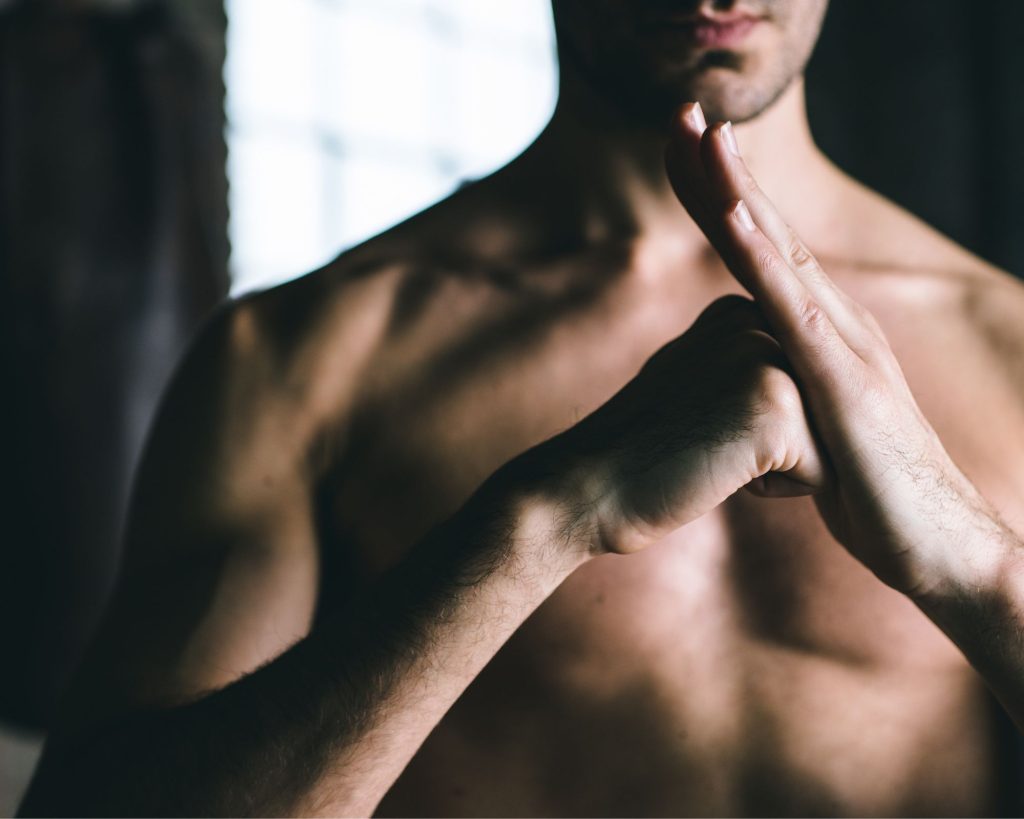
Among the key elements of Jeet Kune Do are the use of straight-line punches and kicks, which emphasize speed and power.
Additionally, economy of motion is essential, as Jeet Kune Do practitioners aim to be effective with as little movement as possible.
This approach ties in with simultaneous offense and defense, as practitioners are trained to be able to attack while simultaneously defending against counter-attacks.
Footwork is also a crucial aspect of Jeet Kune Do, as it enables practitioners to create angles of attack and defense that are difficult for opponents to predict.
The use of hand strikes, kicks, elbows, and knees is also a central element of Jeet Kune Do. Practitioners are trained to use these strikes to maximum effect, often in conjunction with trapping and countering techniques.
Dynamic movement and fluidity are also essential, as Jeet Kune Do practitioners aim to create a seamless transition between offensive and defensive techniques.
Non-telegraphed movement is another hallmark of Jeet Kune Do. This means that practitioners aim to make their movements as difficult to predict as possible, in order to keep their opponents guessing.
And finally, grappling and ground fighting techniques are also a part of Jeet Kune Do. These are typically used in a defensive capacity.
Another thing I think is important to look at is the different rankings and levels in each art. if you are looking to take up either Aikido or Jeet Kune Do, whether as a hobbyist or to compete, you need to understand the different levels of proficiency and what is required for testing and ranking.
Aikido Rankings & Levels

Aikido is a discipline that has many different levels, each represented by a different colored belt. The first level is white belt, which is for beginner students. Once you have mastered the basics of Aikido, you can move on to the blue belt, which is for intermediate students.
And finally, once you have mastered the art of Aikido, you can become a black belt, which is the highest level.
There are three degrees as a black belt holder: 1st dan, 2nd dan, and 3rd dan black belt. In order to achieve each of these degrees, you must pass a test that proves your mastery of Aikido.
There are also other ranks and colors that exist outside of the traditional ranking system. In some Western Aikido schools, there are more ranks added in between 1st dan and 2nd dan.
These ranks can be any combination of colors, and it allows for students to be promoted at a more gradual pace and helps to distinguish between students of different ranks.
Jeet Kune Do Rankings & Levels
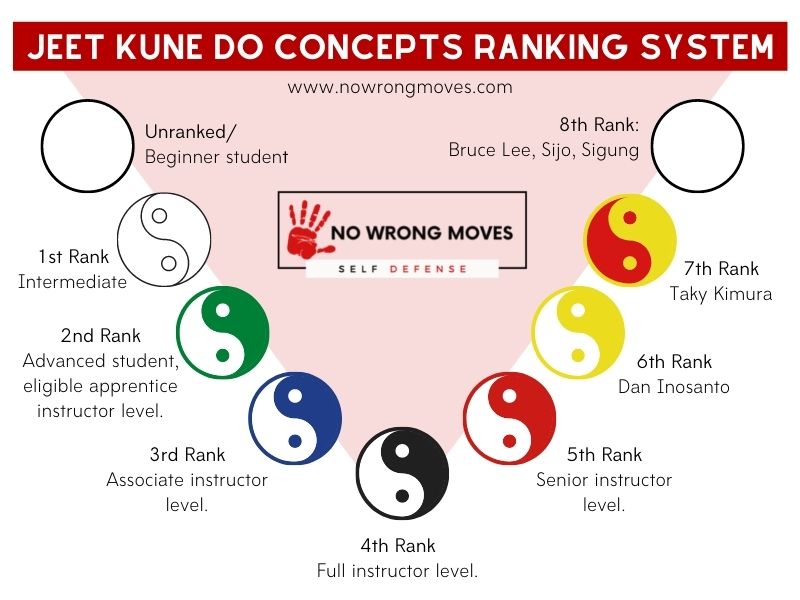
In the martial art of Jeet Kune Do, there is a common misconception that there are no belts or ranking system. This likely stems from the fact that belts aren't standardized among JKD schools, and that Bruce Lee himself didn't even give belts to his students.
That doesn't mean ranks don't exist though. Jeet Kune Do does have a belt system--it just isn't as formalized as other martial arts.
The belt system in Jeet Kune Do consists of five levels, each represented by a different colored belt. The first level is the beginner level, represented by a white belt.
The second level is the intermediate level, represented by a green belt. The third level is the advanced level, represented by a brown belt. The fourth level is the expert level, represented by a red belt. Finally, the fifth level represents mastery, represented by a black belt.
In Jeet Kune Do, rank is based on an individual's proficiency in the art rather than the amount of time they have been practicing it.
The ranks are not awarded based on the amount of techniques or forms the practitioner has learned, but rather on their understanding and application of the art. Promotion of rank is at the discretion of the instructor, and is based on their observation of the student's progress and ability.
Aikido Vs. Jeet Kune Do Attire
This section simply compares the clothing and uniforms that practitioners wear in combat.
Aikido Attire:
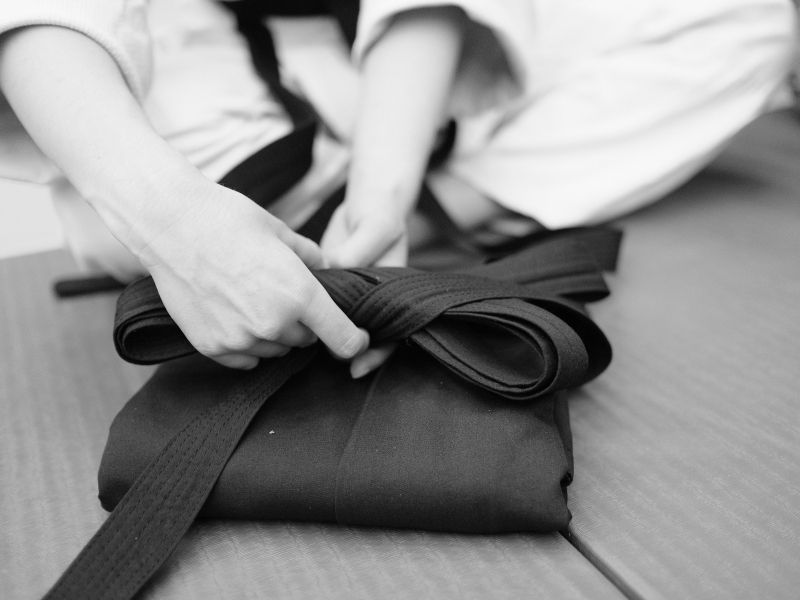
Most aikido practitioners wear a white dogi, or “uniform.” The dogi is a loose-fitting cotton kimono with a belt. In some schools, aikido students also wear hakama, which are pleated trousers that are tied at the waist and fall below the knee.
Male practitioners often don white tabi (socks), while female practitioners often wear white zori (wooden sandals). Some people also choose to practice without any clothes on in order to better feel their body and movements, but this isn't all too common.
Jeet Kune Do Attire:

Jeet Kune Do practitioners typically wear a white or black t-shirt and either black or brown pants. Many practitioners also choose to wear a headband, though it is not required. Bruce Lee himself wore a gi in some of his earlier films.
What A Typical Aikido Training Session Looks Like

A typical Aikido practice session usually starts with a bow. This is a sign of respect for the dojo, the other students, and the instructor. The etiquette of aikido extends beyond just the bow, though. One must always be respectful, appreciative, and protective of all beings.
This attitude must be carried throughout the entire practice session.
Physical strain, whether during conditioning or in sparring against others, is part and parcel of Aikido. As such, practitioners need to maintain good manners and a positive attitude whenever they're in aikido class.
Aikido teaches you how to handle violence, but it still ultimately strives for peace, so never let your ego get in the way during your training.
Also remember that non-resistance is an essential element of proper aikido technique execution. Intercepting, deflecting, and redirecting an attack utilize the momentum and inertia of the attack.
Note that non-resistance does not mean being passively overpowered by the attack. But if you can avoid physical conflict, then you absolutely should.
It is also always important to maintain good posture and a relaxed body. Good posture includes maintaining your balance and keeping your center of gravity low. This helps you to be more aware of your surroundings and to respond more effectively to any situation.
Maintaining a relaxed body allows you to move more freely and makes it less likely that you will be thrown off balance by an attacker.
Similarly, be sure to focus on your breathing during aikido practice. This helps to calm and focus the mind, allowing for better decision making and execution of techniques.
Next, warm-up exercises are often done, including stretches and rolling or breakfalls (ukemi). These help to prepare the body for physical activity and prevent injury.
Following warm-ups, the instructor will lead the class through various aikido techniques and movements. These often involve practicing with a partner, called uke-nage (uke being the attacker, nage being the defender).
Practice with a spirit of cooperation, not necessarily competition. The goal is to mutually improve each other's technique and understanding of aikido principles, not to overpower or dominate the other person.
The practice session may also include weapons training, using a wooden sword (bokken) and wooden staff (jo). Weapons techniques often involve similar principles to those practiced with empty-handed techniques, but provide another layer of complexity and challenge.
What A Typical Jeet Kune Do Training Session Looks Like
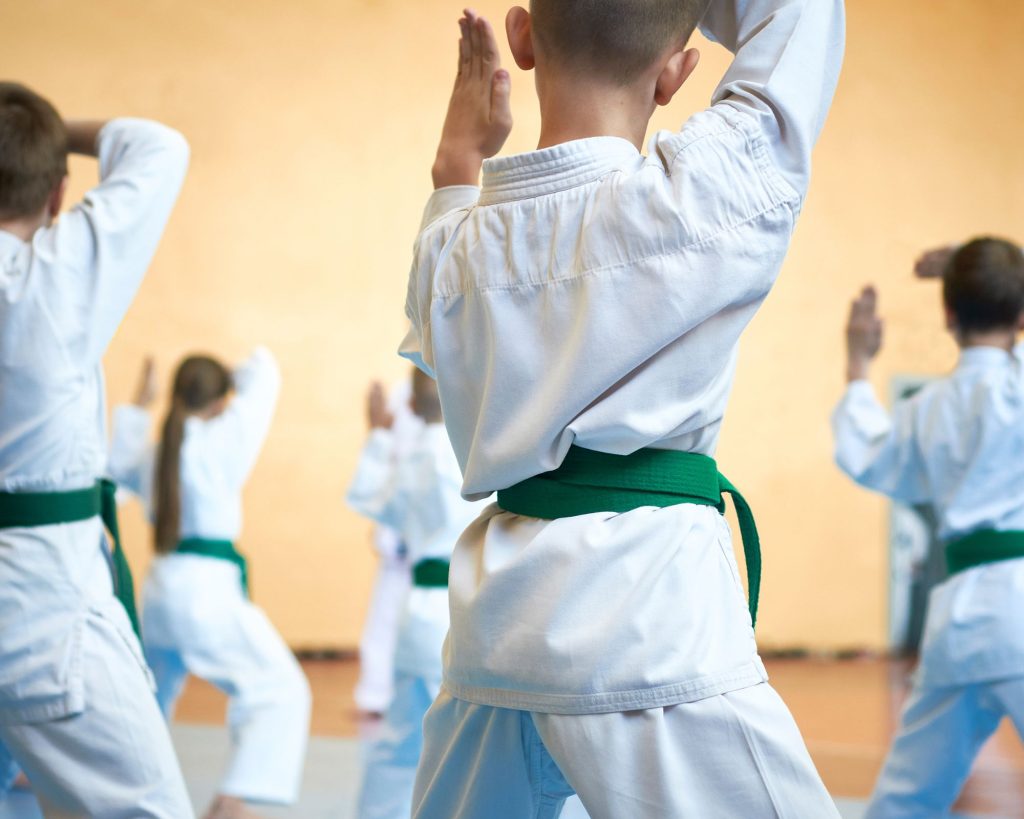
A Jeet Kune Do practice class will typically begin with a warm-up. The warm-up may consist of light calisthenics, such as jumping jacks or running in place. This is followed by stretching, which helps to prepare the body for the physical activity to come.
The next part of the class will focus on techniques. Students will learn and practice different punches, kicks, and blocks. They will also learn how to use these techniques in combination with one another.
After the technique portion of the class, students will participate in sparring. This is where they will put their newly learned skills to the test by sparring with an opponent. Sparring is done with safety gear, such as gloves and mouthguards, to protect both participants.
A typical Jeet Kune Do practice class will last for about an hour and a half.
Conclusion: Aikido Vs. Jeet Kune Do
I hope you now have a deeper understanding of Aikido and Jeet Kune Do. In all truth, it is not about which discipline is "better" as they each have their pros and cons.
If you do plan on starting classes for either, please check out my other related posts, as I have tried my best to answer all the FAQs related to the art.
Feel free to share this post and any graphics you like, and of course, if you have any questions or thoughts, drop them below or shoot me an email, and I will be happy to assist 🙂
[author-box-jpx-fitness]
